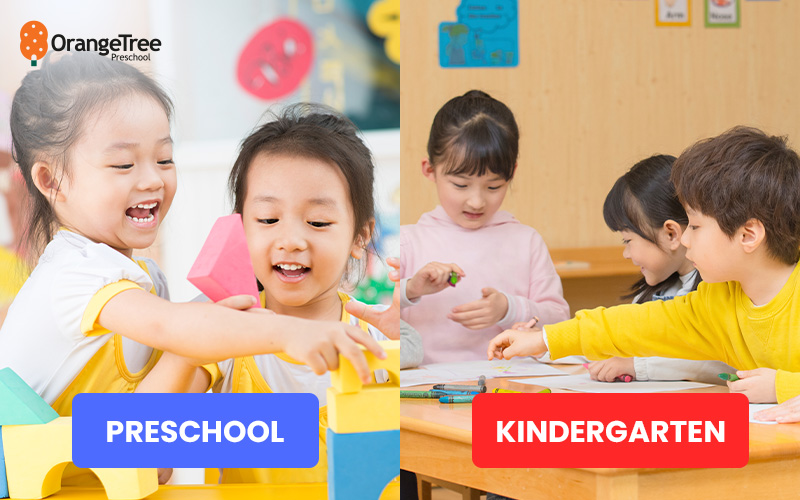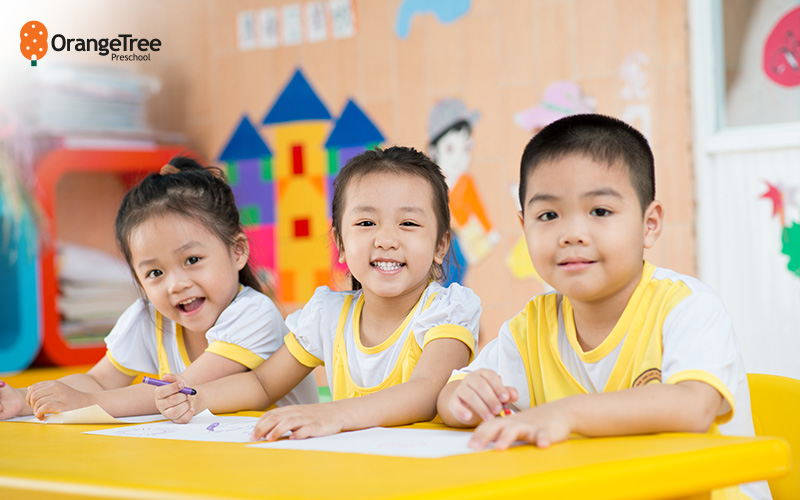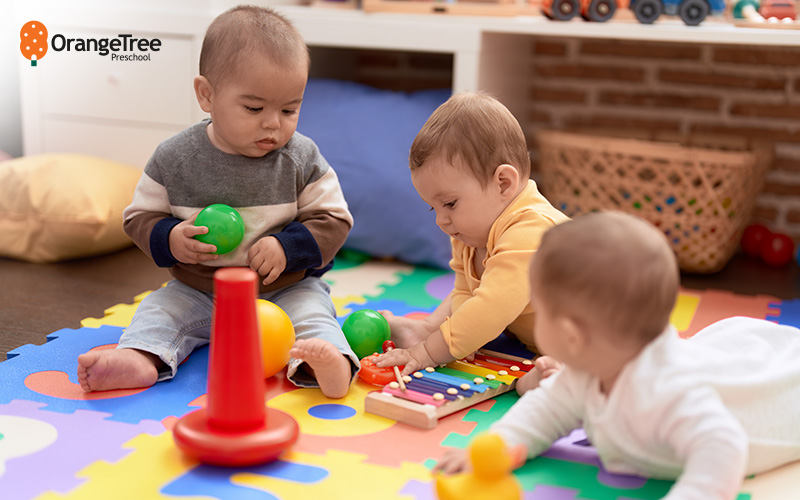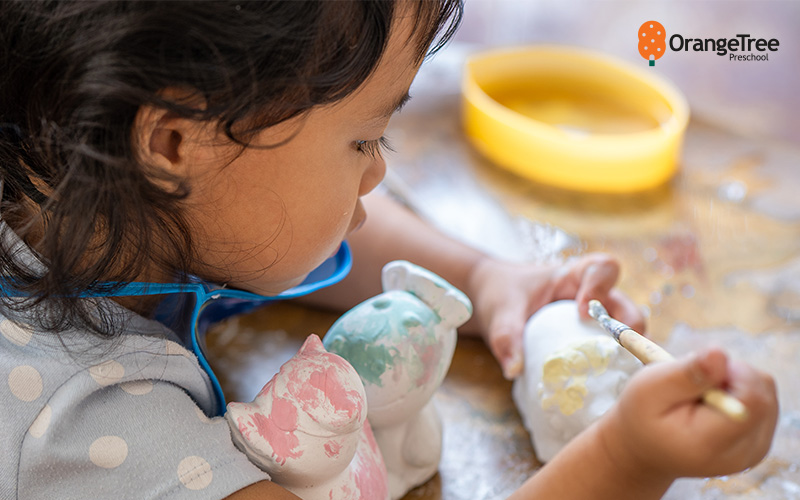
Key Differences Between Preschool and Kindergarten
04 September 2025
Key Takeaways
- Preschool and kindergarten differ in age groups, programme focus, and structure.
- Childcare centres provide services, including infant care, that suit a broader age range.
- Knowing the differences between preschool and kindergarten can help parents choose a suitable learning environment based on their child’s needs.
When it comes to early childhood education in Singapore, it is important for parents to understand the distinctions between preschool and kindergarten. While the terms are often used interchangeably, they refer to different setups, age groups, and learning approaches. Choosing the right one ensures that your child is placed in a suitable learning environment that matches their developmental stage.
In this guide, we will take a closer look at the key differences so you can make an informed decision for your child’s early learning journey.
1. Preschool vs Kindergarten: Definition

In Singapore, preschool is a general term that covers early childhood programmes for children between 18 months and 6 years of age. This includes childcare centres, which offer a wide range of services, and kindergartens, which are more focused in structure and age group.
A kindergarten typically refers to a school that caters to children from 3 to 6 years old, focusing mainly on nursery and kindergarten levels. It does not usually offer infant care or playgroup programmes. These centres usually operate for three to four hours a day and focus more on academic preparation.
On the other hand, childcare centres classified as preschools often offer full-day or half-day care. These centres include multiple levels—playgroup, nursery, and kindergarten—and provide greater flexibility for working parents. They are also regulated to meet developmental needs through structured routines and age-appropriate activities.
2. Age Groups and Programmes

One of the biggest differences between preschool and kindergarten is the range of learning age groups that each institution serves.
Childcare centres, often referred to as preschools, begin as early as 18 months. Some centres even provide infant care for babies aged 2 to 17 months. These centres offer a continuum of education: playgroup (18 months–2 years), nursery (3–4 years), and kindergarten (5–6 years).
In contrast, kindergartens typically begin from nursery level (around 3 years old) and continue up to kindergarten level, stopping at age 6. They do not cater to toddlers below the age of three.
This broader range at childcare centres supports a smoother transition from toddlerhood to school readiness. It allows parents to enrol their children in a single centre throughout their early years, providing stability and consistency in their learning and care.
3. Learning Focus

Another key difference between preschool and kindergarten lies in the focus and structure of each programme.
At the younger end, namely playgroup and nursery levels, the emphasis is on social, emotional, motor, and cognitive development through play. Activities are often hands-on and designed to help children build communication skills, confidence, and coordination.
As children move to the kindergarten level, the focus shifts to more structured learning. The curriculum at this stage begins to introduce literacy, numeracy, and language skills to prepare children for formal schooling.
A well-designed preschool kindergarten curriculum also nurtures critical thinking and creativity whilst encouraging independence. Some centres go a step further by incorporating bilingual elements, giving children a strong foundation in both English and their Mother Tongue. A bilingual preschool environment is particularly beneficial in a multicultural society like Singapore, where children are expected to be proficient in more than one language from an early age.
Ultimately, both preschool and kindergarten settings aim to prepare children for the transition to primary school. However, childcare-based preschools usually offer a more holistic development model, while kindergartens tend to be more academically focused.
Choosing between a preschool and kindergarten is about more than just convenience; it is about finding a suitable learning environment that supports your child’s needs at every stage of development. Childcare-based preschools offer a broader age range, care services, and full-day programmes that cater to both working parents and growing children. Meanwhile, kindergartens may be a good fit for those looking for shorter, academic-focused programmes in preparation for formal schooling.
Here at Orange Tree Preschool, we offer a nurturing, bilingual environment that supports children from toddlerhood through their preschool years. Our preschool kindergarten curriculum is carefully designed to foster social, cognitive, and academic development across all learning age groups. Whether your child is just beginning their journey or preparing for primary school, we are here to guide and support every step of the way.
To find out more about our facilities and programmes, please schedule a tour with us today.
